Nestled deep beneath the rolling hills of Cappadocia in central Turkey lies a remarkable relic of the past – the ancient underground city of Derinkuyu. This vast subterranean complex, first discovered by chance in 1963, has captivated the imagination of historians, archaeologists, and adventurous travelers alike. With its intricate network of tunnels, chambers, and specialized facilities, Derinkuyu stands as a testament to the ingenuity and resilience of the civilizations that called this hidden realm home.
In this comprehensive blog post, we will delve into the fascinating history, engineering marvels, and enduring mysteries of Derinkuyu, uncovering the secrets of this remarkable underground metropolis that sheltered thousands of people throughout the ages.
The Discovery of Derinkuyu: A Chance Encounter
The story of Derinkuyu’s rediscovery is as serendipitous as it is remarkable. In 1963, a local Turkish man, while carrying out renovations on his home, stumbled upon a mysterious room hidden beneath the surface. Intrigued, he began to explore the underground passages and chambers that lay beneath his property, gradually unveiling the true scale and complexity of the hidden city.
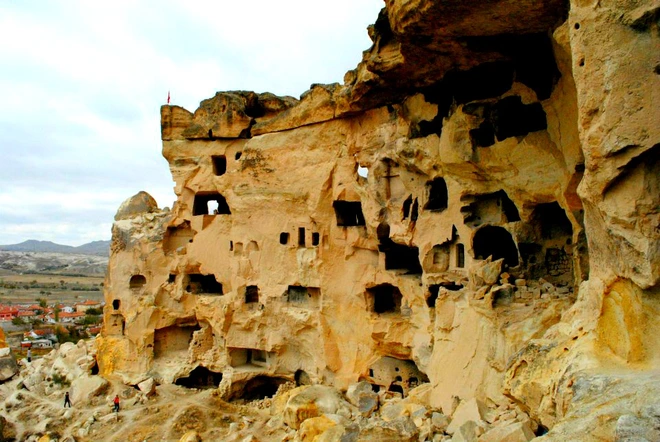
What the homeowner had uncovered was a sprawling underground complex that had remained largely undisturbed for centuries. Consisting of 18 interconnected levels, Derinkuyu was an engineering marvel, a subterranean refuge that could accommodate up to 20,000 people, complete with living quarters, stables, churches, and even wine and olive oil production facilities.
The Origins and Evolution of Derinkuyu
The origins of Derinkuyu can be traced back to the Hittite civilization, who first began excavating the site around 1200 BC. Over the centuries, the underground city was expanded and developed by successive civilizations, including the Phrygians and early Christian communities.
The Hittites, a powerful Bronze Age empire that dominated Anatolia, are believed to have started the initial construction of Derinkuyu as a defensive measure against potential invaders. The underground complex provided a secure, hidden refuge where the population could shelter and withstand prolonged sieges.
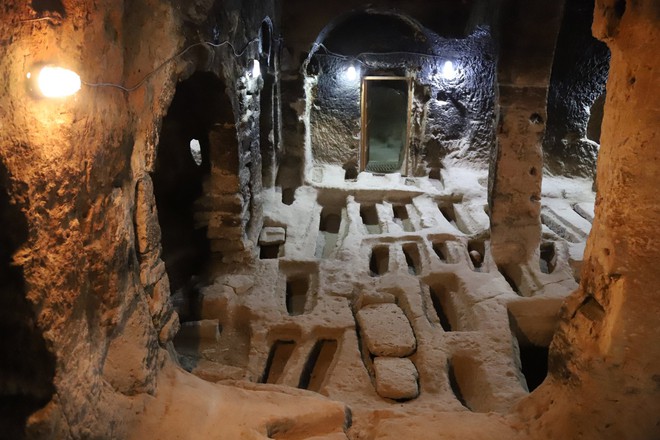
As the centuries passed, Derinkuyu continued to evolve and grow. The Phrygians, a culturally advanced people who succeeded the Hittites, further expanded the underground city, adding new levels, ventilation shafts, and additional living and storage spaces.
The early Christian communities that settled in Cappadocia during the Byzantine era also left their mark on Derinkuyu. They incorporated churches, monasteries, and other religious facilities into the subterranean network, transforming it into a multi-functional underground haven that could provide shelter, sustenance, and spiritual solace to its inhabitants.
The Architectural Marvels of Derinkuyu
The engineering feats that went into the construction of Derinkuyu are truly awe-inspiring. This underground city was not just a simple network of tunnels and chambers, but a meticulously planned and executed subterranean metropolis, designed to accommodate the needs of its inhabitants.
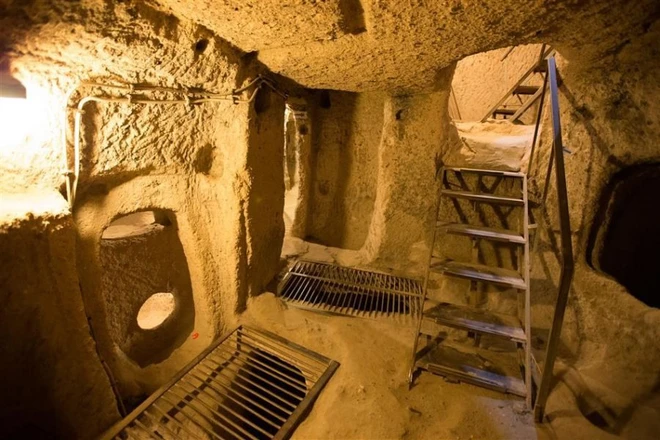
One of the most remarkable aspects of Derinkuyu is its intricate ventilation system. The underground city was equipped with a sophisticated network of air shafts and chimneys, ensuring a steady supply of fresh air to the lower levels. This ingenious system not only provided oxygen but also allowed for the controlled release of smoke and fumes, making the underground environment habitable for extended periods.
Another impressive feat of engineering was the city’s water management system. Derinkuyu was equipped with numerous wells, cisterns, and storage chambers that allowed for the collection, distribution, and conservation of water. This ensured that the inhabitants had access to a reliable source of this precious resource, even during times of siege or environmental hardship.
The layout of Derinkuyu was also designed with defense and security in mind. The underground city featured strategically placed defensive features, such as narrow passages, hidden entrances, and even rolling stone doors that could be used to seal off sections of the complex in the event of an attack. This multilayered approach to security allowed the inhabitants to effectively protect themselves from potential invaders.
The Everyday Life of Derinkuyu’s Residents
Imagine the bustling activity that once filled the halls and chambers of Derinkuyu. This underground city was not just a place of refuge, but a thriving community where people lived, worked, and worshipped.
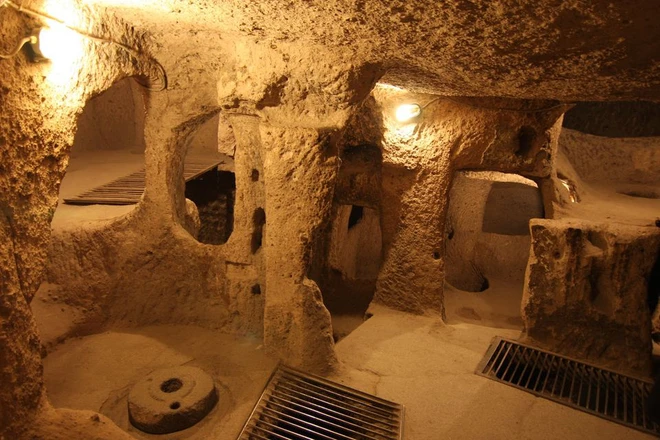
The upper levels of Derinkuyu were likely home to the city’s residential areas, with interconnected living quarters, kitchens, and communal spaces. As one descended deeper into the complex, the purpose of the spaces shifted, with lower levels dedicated to specialized functions such as stables, food storage, and even wine and olive oil production facilities.
The presence of churches, chapels, and other religious structures within Derinkuyu suggests that the underground city was not just a practical haven, but also a spiritual one. The early Christian communities that took refuge in Derinkuyu were able to maintain their religious practices and traditions, even in the confines of the subterranean realm.
Despite the challenges of living underground, the residents of Derinkuyu found ways to thrive. They cultivated crops in the limited soil available, raised livestock in the stables, and even produced essential goods like wine and olive oil, ensuring a degree of self-sufficiency and sustainability.
The Enduring Mysteries of Derinkuyu
While the history and engineering marvels of Derinkuyu are well-documented, the underground city still holds numerous mysteries that continue to captivate researchers and visitors alike.
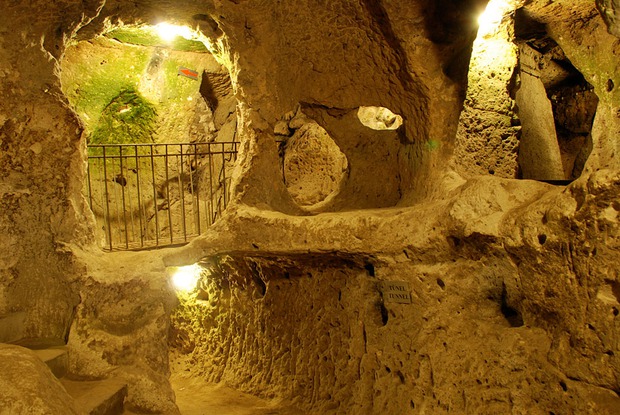
One of the lingering questions is the true scale and extent of the subterranean complex. While 18 interconnected levels have been explored, it is believed that there may be even more undiscovered chambers and passages hidden beneath the surface. The full dimensions and layout of Derinkuyu remain a tantalizing enigma, waiting to be unraveled by future archaeological investigations.
Another mystery surrounds the ultimate fate of Derinkuyu’s inhabitants. While the city served as a refuge during times of conflict and invasion, the reasons for its eventual abandonment remain unclear. Did the inhabitants simply relocate to the surface, or were they forced to flee due to some unknown cataclysmic event? The answers to these questions continue to elude historians, leaving the final chapter of Derinkuyu’s story shrouded in uncertainty.
Conclusion: Unlocking the Secrets of the Past
The underground city of Derinkuyu stands as a testament to the ingenuity, resilience, and adaptability of the civilizations that called this hidden realm home. From its origins as a Hittite defensive outpost to its transformation into a bustling subterranean metropolis, Derinkuyu’s story is one of human perseverance in the face of adversity.
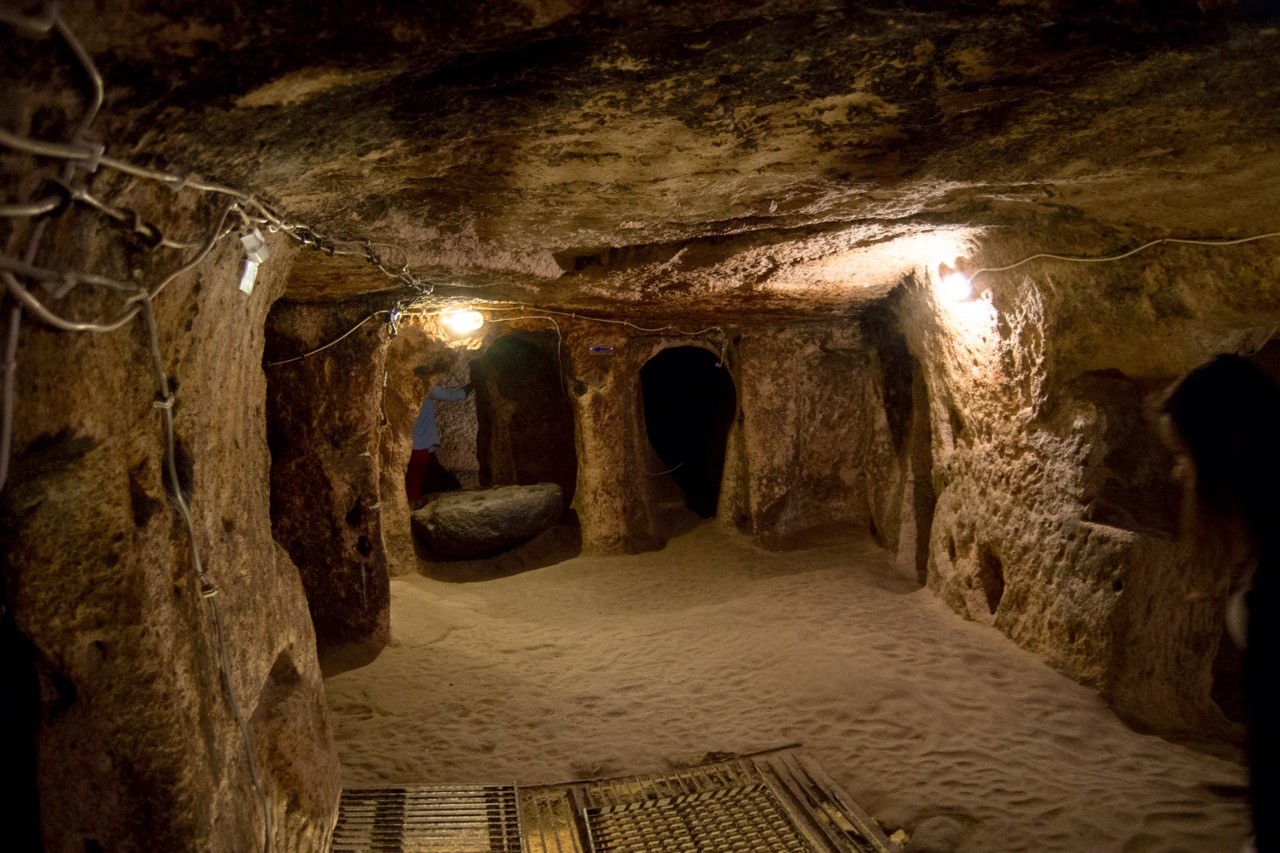
As we continue to explore and unravel the mysteries of this remarkable underground complex, we gain valuable insights into the lives, challenges, and innovations of the people who once inhabited these cavernous halls. Derinkuyu’s legacy serves as a powerful reminder of the enduring human spirit and our ability to thrive, even in the most extraordinary of circumstances.
Whether you are a history buff, an architecture enthusiast, or simply someone captivated by the wonders of the past, the story of Derinkuyu is sure to leave a lasting impression. So, let us embark on a journey through the labyrinthine passages of this ancient underground city, unlocking the secrets of the past and marveling at the ingenuity of our ancestors.
